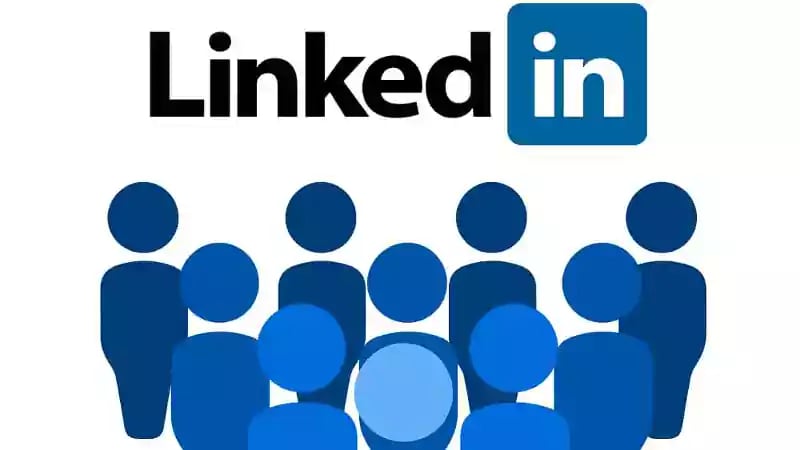How To Become A Trusted Voice On LinkedIn
Social networking is crucial when making a name for yourself within your industry. To become a trusted voice among your peers or a thought leader within your segment, there is one platform on which you need to focus your social networking efforts—LinkedIn.
LinkedIn has been where industry insiders and thought leaders have congregated for over a decade now. With goals of growing their network, expanding into new areas, or learning as much as they can from their peers, leaders across business sectors use this site as their base of operations.
So, now that you've got your company off the ground and are impacting your sector, it's time to think about how to position yourself among these movers and shakers, the thought leaders. To help get you started, we've compiled a list of areas often overlooked when folks find their voice on this platform. Take your time; remember that a reputation takes time to establish. We hope these tips help make LinkedIn work for you.
Optimize Your Profile
Before going any farther into the weeds about establishing your reputation as a thought leader, it's crucial to have your profile fully optimized. This is the first place someone will look when they hear about you, read an article you wrote, or follow a link from your company site. Having each section of your profile written in such a way as to give people a good idea of who you are and what you and your business stand for is a critical step.
Header Bio
The first content under your profile picture is the first taste a visitor will get of who you are and what you do. The key is to say enough to pique their interest in reading on without saying too much as to render the rest redundant. Your header bio should be one line, covering your work in broad strokes and using keywords specific to your segment or industry niche.
About section
This is where you can dive into more detail. Expand on what you said above in your bio; explain the keywords you used with key phrases illustrating how you bring your expertise to everything you do. If your bio says “CEO and chief bottlewasher,” your About section should expand on how you optimize every bottle you wash for a great user experience.
Experience section
Here, you bring your background to the fore and let it shine. Unlike on your resume, where you tailor each entry to make it specific for an opening, on LinkedIn, you want to go into details that highlight their relevance to your current position. If you're the CEO of a software startup in the financial technology space, use your experience section to go over how you worked your way up from bank teller to gain a complete understanding of the financial world.
Education section
Sticking with the fintech example, talk it up here if your degree is in Finance. Include links to any projects you completed, extra-curricular activities, etc. If your degree is in English, on the other hand, use this entry to highlight your focus on those extra-curricular and club activities. It's key that you went to college; just tweak how you talk about what you did there to keep it relevant to your current role so it enhances your leadership qualities.
Work in Some Social Proof
You're aiming for the coveted role of thought leader, and people trust people, so bringing in as much social proof as you can bolster your reputation from the outset. On LinkedIn, that means recommendations and skill endorsements.
Recommendations appear in their section, apart from the experience entry they're associated with. This means that while one from a former boss is awesome, you can ask any connection to write something up.
Say you gave a keynote at an industry event. See if the organizer would give you a good write-up. Or, if you're new to the market, ask an esteemed professor you wowed in college. The more relevant recommendations a profile has, the easier for the public to find it based on keyword searches.
Skill endorsements, on the other hand, are tied directly to your listed skillset. Spend time setting up your skills section to reflect the industry and sector you're aiming at. To go back to our fintech example, call out your mastery of the financial industry, advanced calculus, and the programming languages you’re fluent in.
Then go through your connections and seek out those who know these aspects of your skillset the best to ask to endorse you in them. If you worked on a team project that led to an industry award for best fintech product in your early days, seek out those teammates, tell them what you’re up to now, and see if they’d be willing to put their name on an endorsement of your programming prowess.
Grow Your Network Organically
This is where being patient comes in. You'll need many connections to be seen as a thought leader and trusted voice in your industry. Who would you trust more, the contact with the "500+ connections" on his profile or the one with 59?
Join industry groups and connect with industry influencers. Then, comment on posts, adding thoughtful insight to the conversation. Start posting your updates and short articles to these groups to showcase your knowledge (note we didn't say your product. This isn't the time or place for sales pitches).
Following current influences in your industry will do a couple of things. Reading what they say will give you a good pulse check on the state of your sector, so you know if your thinking is in line or if you will be seen as a rebel. Either one is great; it all depends on the reputation you're looking for.
Once you’re ensconced and engaging in conversations with the right people, it's OK to ask about a cross-post or at least repost their pieces with your commentary to show that you respect their view and have your own to add. Each of these activities will lead to connection requests. Pick and choose appropriately while remembering the goal at this stage is to increase that connection count.
Bonus: Write Great Content
To a certain extent, this should go without saying. But as the crux of the "thought leader" phenomenon, we figured it merited a mention. You need to be able to produce great content. Thoughtful, insightful, original, and engaging content is how you'll establish yourself as that trusted source of industry information known as the thought leader.
This content is also available in:
- German: Wie man eine vertrauenswürdige Stimme auf LinkedIn wird
- Spanish: Cómo convertirse en una voz de confianza en LinkedIn
- French: Comment devenir une voix de confiance sur LinkedIn
- Italian: Come diventare una voce affidabile su LinkedIn
- Romanian: Cum să devii o voce de încredere pe LinkedIn
- Chinese: 如何成为 LinkedIn 上值得信赖的声音








.jpeg?width=352&name=Double%20exposure%20of%20business%20man%20hand%20working%20on%20blank%20screen%20laptop%20computer%20on%20wooden%20desk%20as%20concept%20with%20social%20media%20diagram%20(1).jpeg)
Leave a Comment